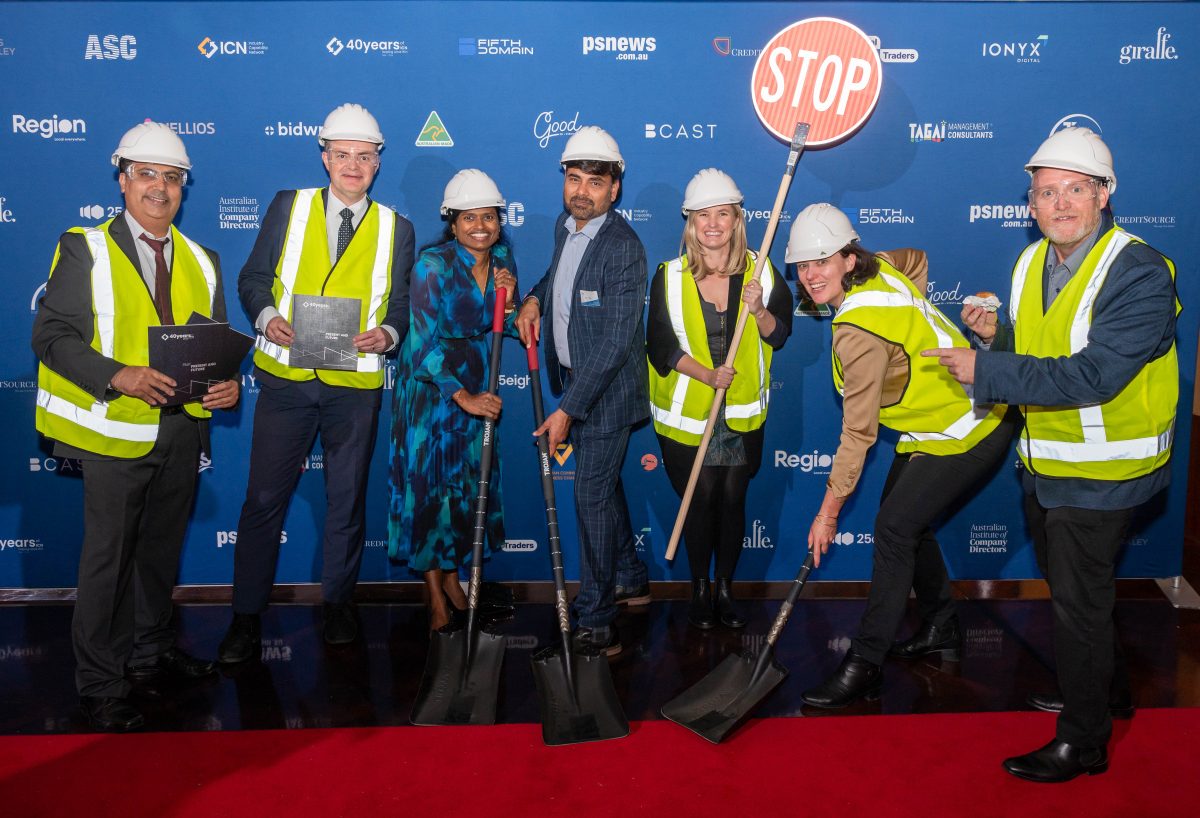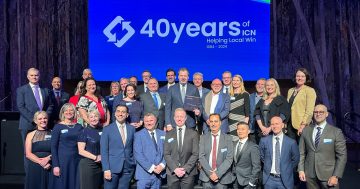
ICN recently celebrated 40 years of connecting businesses with project opportunities around the country. Photo: GoodPR.
It’s a market with huge potential for suppliers of all sizes across all industries and anywhere in Australia, but working with government tends to intimidate small and medium enterprises (SMEs).
Why is this, and how can the owners of these businesses boost their confidence enough to take advantage of government procurement?
According to Greg Harford, CEO of the Canberra Business Chamber, it’s all about understanding how the market works and where your business stands.
“There’s a wealth of opportunity servicing government projects, but many SMEs feel like they can’t compete with large corporations,” he says.
“This simply isn’t true – in fact, there are strict regulations in place to support direct sourcing from SMEs that ensure they get a fair go.”
Indeed, more than half of the 83,000 government contracts awarded between 2022 and 2023 went to SMEs for services, for advertising, engineering, equipment, construction, training, management, research, recruitment and more.
If you’re thinking about selling to government, the first step is to do your research.
“Learn what the government is buying, how procurement works, and where your business could best supply its goods or services,” Greg says.
“Be prepared to meet strict requirements and develop your capability as time goes on – project experience is a significant factor when it comes to winning contracts.
“It’s also a good idea to make sure you’re registered with the right networks, directories and databases to get your name out there before you start bidding.”
The easiest way to find out what government organisations are looking for is to check available and upcoming projects on a procurement system like AusTender.
Business.gov.au and the Department of Finance’s Selling to Government are both good places to start learning how the procurement process works.
Mike Swart is National Strategy Director for the Industry Capability Network (ICN). He gives a brief outline of the procurement process in lay terms.
“Once a need is identified, market research is conducted to understand what the supply chain for that need looks like, determine the project’s objectives and estimate its value,” he says.
“Then the tendering phase begins. Suppliers submit proposals based on their capability to meet contract requirements and provide value for money, and once a shortlist has been made, appropriate businesses will be contacted for contract negotiations.
“Finally, the contract is awarded to the business that best suits the job.”
At its core, ICN connects businesses with project opportunities, provides market insights and fosters a wide network of suppliers through its supply chain database, ICN Gateway.
The organisation also helps with capability development through workshops and personalised support from more than 100 consultants and advocates on behalf of SMEs for beneficial policy and compliance regulations.
Mike says small businesses submitting proposals should be as specific as possible when showing how their business meets contract requirements.
“Avoid going on a tangent trying to ‘sell’ your business and instead clearly outline how your offering meets contract owners’ needs and provides value for money.
“This isn’t just based on overall cost. Government is also concerned with the quality-cost balance of goods and services, flexibility, innovation, environmental sustainability, and more.”
Greg says recognising the importance of SMEs as suppliers on a national scale is key to building a localised economy and improving sovereign capability.
“When SMEs work closely with government, we get vibrant, liveable cities and strong infrastructure across all industries,” he says.
“It also fosters confidence in the general public that local businesses are secure, committed and involved, making individuals more likely to support a circular economy through which all sectors thrive.”
For more information on how to help your business thrive, check out the Industry Capability Network.




















